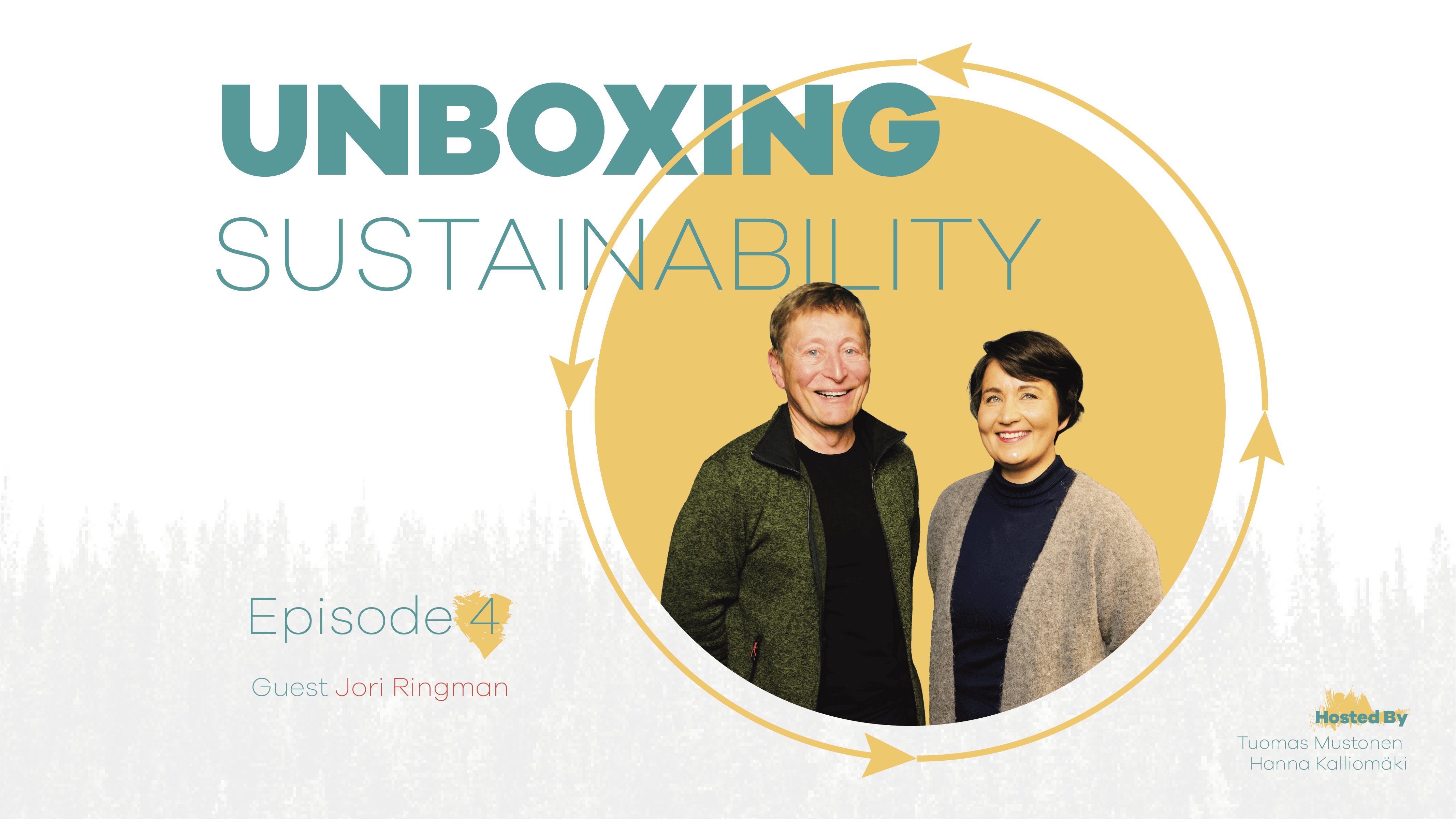The bright side amid the complexity: A sustainable future for Europe

If the preview does not load, you can find the episode here!
Ever wonder if there is a way out of this mess? Is all hope lost? Even amid the complexity, there is a bright side. It is the positive perspectives that can give hope to the confusion on the path to a more sustainable future. In this episode of Unboxing Sustainability, Jori Ringman from Cepi, Confederation of European Paper Industries, talks about EU regulations and how they steer us towards a more sustainable future. This episode will also touch base on the growing forests of Europe, the bioeconomy, packaging materials, and improving the circularity of packaging materials.
Looking at past decades – The importance of sustainability
There has been an increase in the importance of sustainability in the past decades but the origin of sustainability can be traced back over 300 years. Back then forest owners sought sustainability by using timber based on nature’s ability to replenish the wood. Since the development of policies, sustainabilityis becoming more important for companies. Change has come a long way and looking at how far we have come is important, since it can give people hope, and in turn promote more action. Now, awareness has risen, but confusion has also unfortunately risen along with it. With progress, we are continuing in the right direction.
Consumers expects sustainable actions – information transparency in a key role
As a packaging producer, Paptic also has a role in providing information, data, reliability, and transparency about sustainability and sustainable packaging. The same goes for all players in the industry. In a circular economy, we must be able to work together throughout the whole life cycle. Customers ask questions about environmentally friendly packaging materials, recyclability, plastic alternatives, and compostability.
Recycling is a must – let’s make it easy for consumers
Recyclability is an absolute must, but consumers need to know where the materials go, and there need to be systems in place for these materials to be collected. It must be convenient and comfortable for the consumer to dispose the packaging appropriately. There also needs to be the capacity to recycle, and authorities and municipalities must be involved. A good collection system also ensures revenue for municipalities.
A long wood-fibre can be recycled over 25 times. But we have also new end-uses, like textiles, where recycling fibres from packaging materials when they are not applicable for packaging end-use anymore.
Fibre-based materials, such as those used in recyclable packaging, and reusable bags are examples of circular economy materials.
The role of fibre-based materials and forests
Cellulose fibres have been used for centuries. In fact, computer science is based on paper, and we can see paper being used to replace plastic. Paper has impacted many things including technology, literacy, safety, making sustainable materials and much more. Fibre based materials can help to provide a good quality of life, and for example paper has been especially significant in education and hygiene. We deal with many fibre-based materials in our everyday lives, they are all around us.
Looking at long-term trends is worthwhile. The European forests are growing for more than are being harvested. 40% of the Europe’s land area is covered by forests. The forest grows 612,000,000 cubic meters per year in Europe = a building in which you could put in the entire human population. But it is not only the quantity that matters but also the quality of the wood.
Carbon sink and carbon stock
Understanding the difference between carbon stock and carbon sink is important. It is important to note that the sink and stock change and vary constantly. A positive sink can still mean a carbon stock in a forest. The reason for this is well-established sustainable forest management in Europe, the carbon sink is 3.5 times bigger than it was in 1950’s.
Carbon sink is anything that absorbs more carbon from the atmosphere than it releases – for example, plants, the ocean, and soil.
Carbon stock – The quantity of carbon contained in a “pool”, meaning a reservoir or system which has the capacity to accumulate or release carbon.
EU regulations and how they steer us towards a more sustainable future
A new EU directive called the Green Deal was launched by the European Commission. The proposals for the deal have direct and indirect impacts on forests, forestry and related operations, as well as on the amount of wood that can be supplied from European forests. This could have all kinds of impacts. From a global perspective, European forest management is doing very well. Europeans have set the bar high in terms of sustainable forests in Europe. §
“You can do anything from wood but not everything. Wood should be used for where it makes the biggest difference for better.” – Jori Ringman
Sustainability was invented in forestry over 300 years ago, it was to grow more the forest than harvest. In recent year sustainability is getting more important for companies, for example in reporting. A lot has already been achieved but still need to aim higher in sustainability
Find all our podcast episodes here: Podcast

